总结——ASP.NET 对象
ASP.NET六大对象是ASP.NET的基础,也是重要的知识,现总结如下。
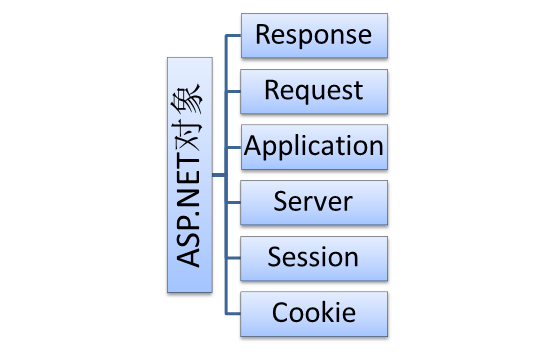
Response对象
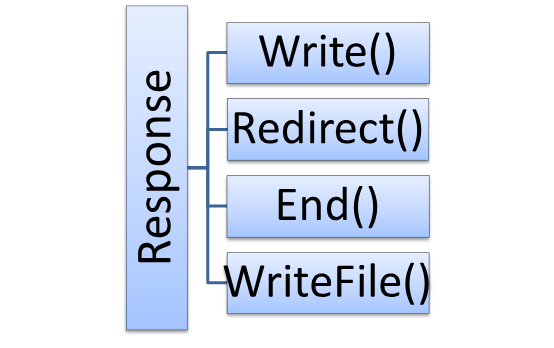
Request对象
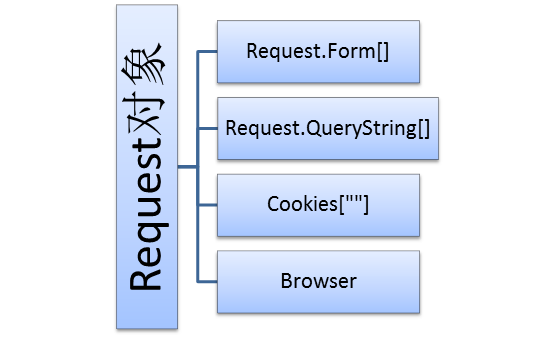
理解:
对于get方式的提交,用Request.QueryString["param"]方式获取浏览器参数
如:
URL:
<a
href="test.aspx?name=Frankie&sex=男">URL1</a>
string name = Request.QueryString["name"];
string sex = Request.QueryString["sex"];
对于post方式提交的表单,用Request.Form["name"]方式获取表单提交的值
如:
表单:
<form
action="1.aspx" method="post" id="form1">
<p>姓名<input
type="text" size="20" name="Name"
/></p>
<p>兴趣<input
type="text" size="20" name="Love"
/></p>
<p><input
type="submit" name="B1" value="提交"
/></p>
</form>
string name = Request.Form["Name"];
string hobby = Request.Form["Hobby"];
|
Application对象
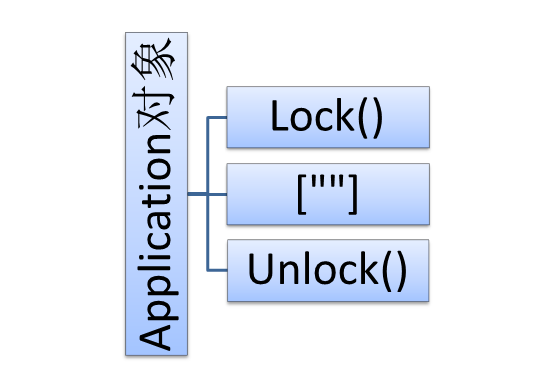
理解关键:所有用户都共用一个Application对象,当网站服务器一开,就创建了Application对象,所有的用户都可以对Application对象进行修改。
应用:聊天室、网页计数器等。
聊天室
登录界面(前台代码login.aspx):
<html
xmlns="http://www.w3.org/1999/xhtml">
<head
runat="server">
<title></title>
</head>
<body>
<form
id="form1" action="chatMain.aspx" method="post" runat="server">
<div>
请输入大名:<input
type="text" size="10" value="采花大盗"
name="username"
/>
请输入帐号:<input
type="text" size="8" value="123" name="no"/>
<input
type="submit" name="submit" size="8" value="提交"
/>
</div>
</form>
</body>
</html>
|
登录(后台代码login.aspx.cs):
protected
void Page_Load(object sender, EventArgs e)
{
if (Request["submit"] == "提交")
{
//Response.Write(Request["submit"]);
Session["username"] = Request["username"];
Session["no"]=Request["no"];
Response.Redirect("../Application/chatpage.htm");
}
}
|
显示界面(Chat.html):
分为上下两个框架,一个用来显示聊天内容,一个用来发送信息。模拟QQ聊天界面。
<html
xmlns="http://www.w3.org/1999/xhtml">
<head>
<title>Chat Page</title>
</head>
<frameset
rows="*,100">
<frame
src="Display.aspx"
/>
<frame
src="Message.aspx"
/>
</frameset>
</html>
|
发送消息窗口(Message.aspx):
<head
runat="server">
<title></title>
</head>
<body
bgcolor="lightblue">
<form
id="form1" action="Message.aspx" method="post" runat="server">
<div>
<input
type="text" name="message" size="50"
/>
<input
type="submit" value="send"
/>
</div>
</form>
</body>
</html>
|
后台代码(Message.aspx.cs):
这是最重要的地方。
protected
void Page_Load(object sender, EventArgs e)
{
string username = Session["username"].ToString();
string no = Session["no"].ToString();
string mywords = Request["mywords"];
string talk = Request["message"];
mywords = "姓名:" + username + " 机器号?:" + no + "说:" + talk;
Application.Lock();
Application["talk"] = Application["talk"] + mywords + "<br/>";
Application.UnLock();
}
|
显示消息界面(Display.aspx):
<html
xmlns="http://www.w3.org/1999/xhtml">
<head
runat="server">
<title>Display</title>
<meta
http-equiv="Refresh" content="5"; url="Display.aspx"
/>
<script
type="text/javascript">
function scrollWindow() {
this.scroll(0, 65000);
setTimeout("scrollWindow()", 200);
}
scrollWindow();
</script>
</head>
<body>
<form
id="form1" runat="server">
<p
align="right"></p>
<% Response.Write(Application["talk"]); %>
</form>
</body>
</html>
|
完毕!
|
自制网页计数器
前台页面(counter.aspx):
<html
xmlns="http://www.w3.org/1999/xhtml">
<head
runat="server">
<title></title>
</head>
<body>
<p>你是本站第<h1><%=GetImg(Convert.ToInt32(Application["counter"])) %></h1>位访客!</p>
</body>
</html>
|
后台页面(counter.aspx.cs):
很重要。
protected
void Page_Load(object sender, EventArgs e)
{
Application.Lock();
//Add 1 when every page_load
Application["counter"] = Convert.ToInt32(Application["counter"]) + 1;
Application.UnLock();
}
///
<summary>
/// help method, transform a number to .gif
///
</summary>
public
string GetImg(int counter)
{
string myimage = string.Empty;
string S = counter.ToString();
for (int i = 0; i <= S.Length - 1; i++)
{
myimage = myimage + "<img src='/Application/img/" + S.Substring(i, 1) + ".gif" + "' />";
}
return myimage;
}
|
完毕! |
Server对象
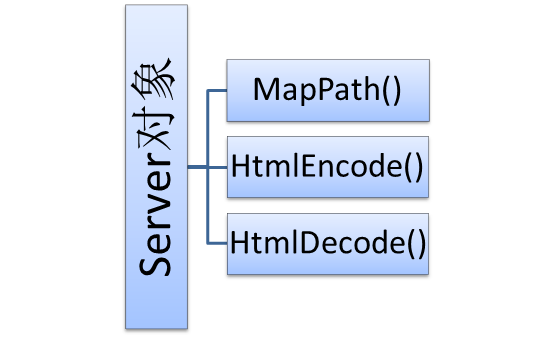
Server对象提供对服务器上的方法和属性进行访问。例如对URL或者HTML编码成字符串,获奖虚拟路径映射到物理路径以及设置脚本的超时期限等。
向浏览器输出HTML代码:
protected
void Page_Load(object sender, EventArgs e)
{
Response.Write(Server.MachineName+Server.HtmlEncode(" Hello world;(<h1>Welcome.</h1>)"));
Response.Write("<br />");
Response.Write("Hello world;(<h1>Welcome.</h1>)");
}
显示效果如下:
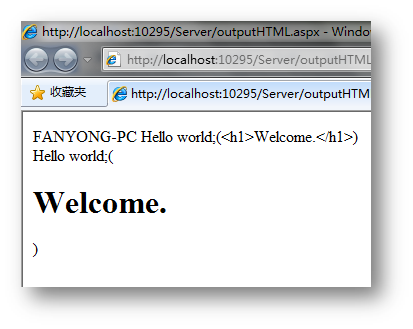
|
取得文件路径:
Server.MapPath()的用途是把"网络路径"转换为Server机器上的实际路径。
GetMapPath.aspx.cs
<html
xmlns="http://www.w3.org/1999/xhtml">
<head
runat="server">
<title></title>
</head>
<body>
<form
id="form1" runat="server">
<div>
Server.MapPath("/") 传回:<%=Server.MapPath("/") %>
<br />
Server.MapPath("/abc.txt") 传回:<%=Server.MapPath("/abc.txt") %>
<br />
</div>
</form>
</body>
</html>
|
Session对象

Session其实就是访问者从到达某个特定网页到离开为止的那段时间,每个访问者都会获得一个单独的Session。
用Session实现电子商务网站购物车功能
网络购物车
肉店:meatShop.aspx
<html
xmlns="http://www.w3.org/1999/xhtml">
<head
runat="server">
<title></title>
</head>
<body>
<form
id="form1" action="meatShop.aspx" method="post" runat="server">
<h1><p>各种肉大甩卖,一律十块:</p></h1>
<p><input
type="checkbox" name="pork" value="pork"
/>Pork</p>
<p><input
type="checkbox" name="beef" value="beef"
/>Beef</p>
<p><input
type="checkbox" name="mutton" value="mutton"
/>Mutton</p>
<p><input
type="submit" value="Submit" name="submit"
/>
<input
type="reset" value="Reset" name="reset"
/>
<a
href="ballShop.aspx">Buy Another</a>
<a
href="Cart.aspx">Look up Cart</a>
</p>
</form>
</body>
</html>
后台代码:meatShop.aspx.cs
protected
void Page_Load(object sender, EventArgs e)
{
if (Request["submit"] == "Submit")
{
Session["pork"] = Request["pork"];
Session["beef"] = Request["beef"];
Session["mutton"] = Request["mutton"];
}
}
|
球店:ballShop.aspx
<html
xmlns="http://www.w3.org/1999/xhtml">
<head
runat="server">
<title></title>
</head>
<body>
<form
id="form1" action="ballShop.aspx" method="post" runat="server">
<h1><p>各种球大甩|卖,一律8块:</p></h1>
<p><input
type="checkbox" name="basketball" value="basketball"
/>basketball</p>
<p><input
type="checkbox" name="football" value="football"
/>football</p>
<p><input
type="checkbox" name="volleyball" value="volleyball"
/>volleyball</p>
<p><input
type="submit" name="submit" value="submit"
/>
<input
type="reset" value="reset" name="reset"
/>
<a
href="meatShop.aspx">Buy Another</a>
<a
href="Cart.aspx">查看购物车</a>
</p>
</form>
</body>
</html>
后台代码:ballShop.aspx.cs
protected
void Page_Load(object sender, EventArgs e)
{
if (Request["submit"] == "submit")
{
Session["basketball"] = Request["basketball"];
Session["football"] = Request["football"];
Session["volleyball"] = Request["volleyball"];
}
}
购物车:Cart.aspx
<html
xmlns="http://www.w3.org/1999/xhtml">
<head
runat="server">
<title>User Name</title>
</head>
<body>
<form
id="form1" runat="server">
<h1><p>你选择的结果是:</p></h1>
<div
align="center">
<center>
<%Response.Write(Session["pork"]);%><br />
<%Response.Write(Session["beef"]);%><br />
<%Response.Write(Session["mutton"]);%><br />
<%Response.Write(Session["basketball"]);%><br />
<%Response.Write(Session["football"]);%><br />
<%Response.Write(Session["volleyball"]);%>
</center>
</div>
</form>
</body>
</html>
|
Cookie对象
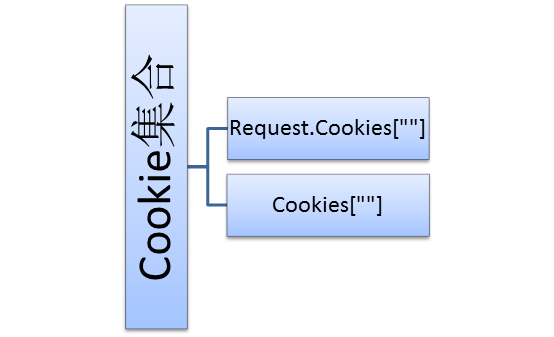
写入Cookie:writeCookie.aspx.cs
protected
void Page_Load(object sender, EventArgs e)
{
HttpCookie myCookie = new
HttpCookie("user");
myCookie.Value = "Hello World";
Response.Cookies.Add(myCookie);
//Response.Write(myCookie.Value);
}
读取Cookie:readCookie.aspx.cs
protected
void Page_Load(object sender, EventArgs e)
{
string myCookie = Request.Cookies["user"].Value;
Response.Write(myCookie);
}
|
完毕!







